The Story of Oxford Road Corridor
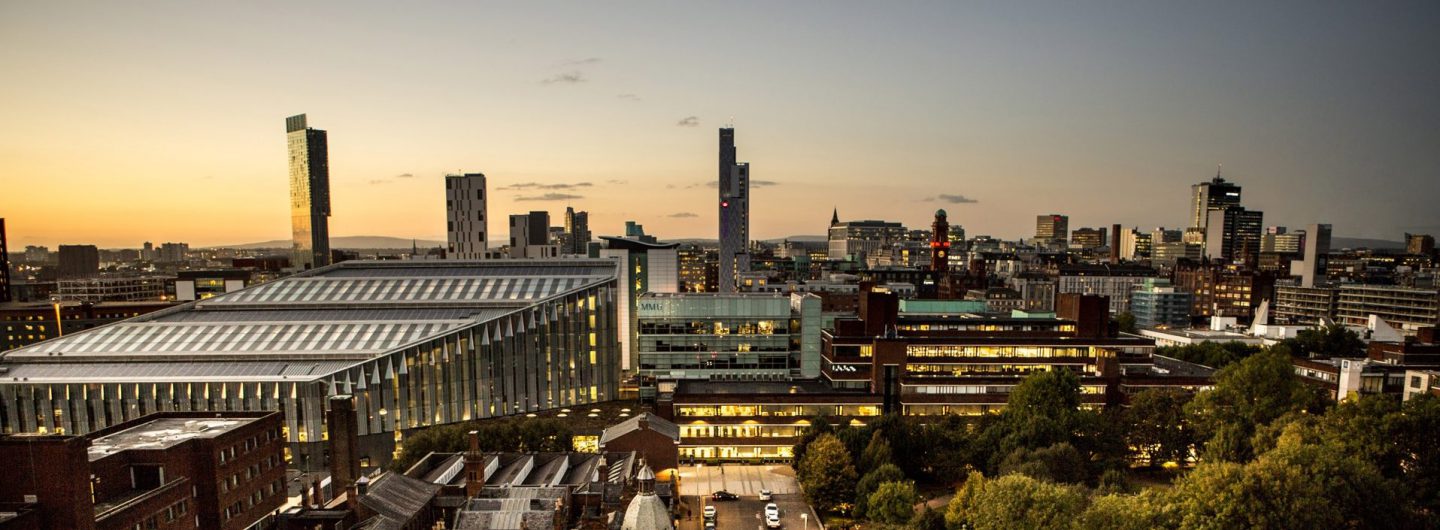
The Story of Oxford Road Corridor is one of innovation and culture, from Rutherford splitting the atom and Alan Turing inventing the modern computer to the discovery of Graphene. The former Poet Laureate, Carol Ann Duffy and poet and playwright Lemn Sissay hold leading roles at our universities, and the area is steeped in literature and political history, immortalised in prose, poem and song: from Fredrich Engels’ sombre description of working-class life, John Cooper Clarke’s ‘Queen of the Ritz’ in Salome Maloney and Morrissey’s peak through the roof of the Holy Name Church, in Vicar in a Tutu.
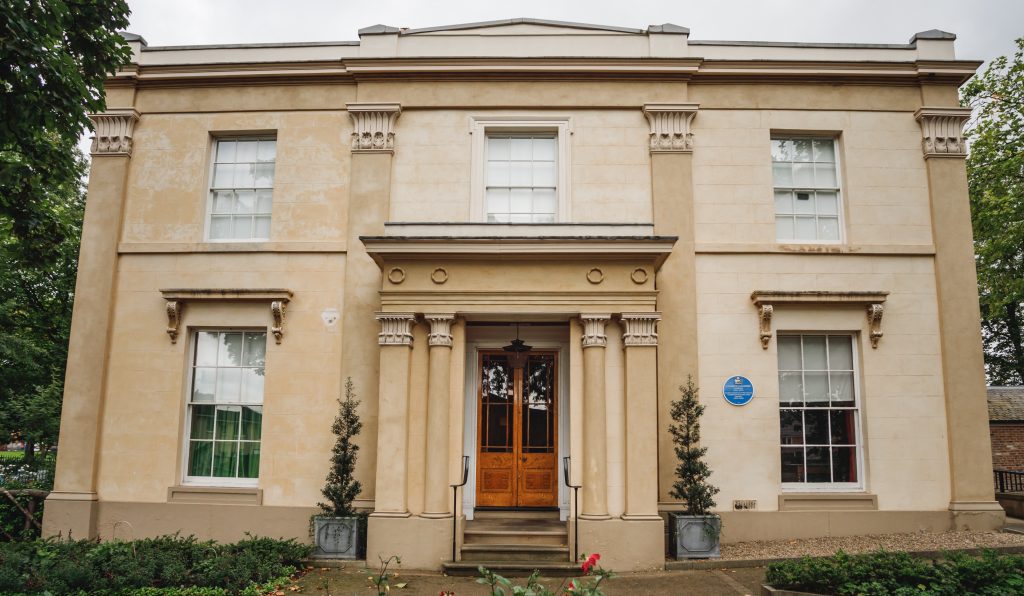
| 1752 | Staff at Manchester Royal Infirmary discharge their very first patient on 23 October 1752. From starting with just 12 beds, the MRI now has 770 and treats around 750,000 patients each year. |
| 1814 | Jordan’s School of Anatomy opens and eventually becomes Victoria University of Manchester. |
| 1824 | The Manchester Mechanics Institution opens as part of a national movement for the education of working men, eventually becoming The University of Manchester Institute of Science and Technology (UMIST). |
| 1830 | Peveril Of The Peak is registered as a public house and remains Manchester’s most iconic pub nearly 200 years later. |
| 1835 | Elizabeth Gaskell’s house is built. In recent years there has been £2.5M in project funding to allow visitors to experience the house as it was in the 1860’s when Elizabeth occupied the home (pictured). |
| 1838 | Manchester School of Design opens for the first time in the basement of Manchester Art Gallery. |
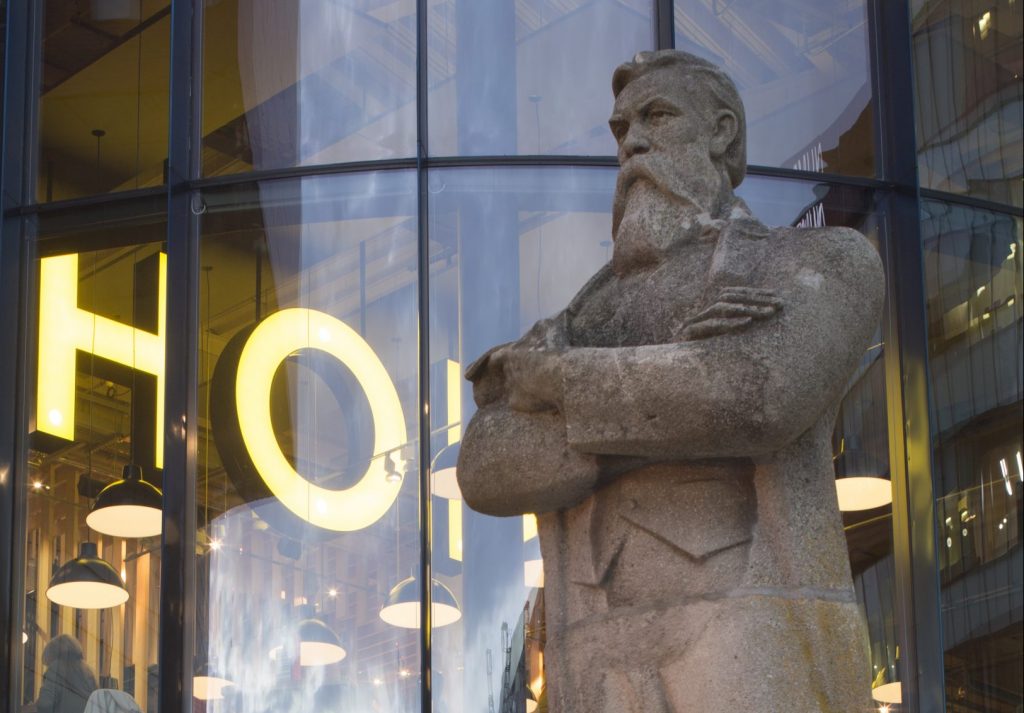
| 1845 | Engels publishes, ‘The condition of the Working Class in England’; which references the slums of Oxford Street. A statue of Engels can now be found outside HOME (pictured). |
| 1845 | Karl Marx outlines his earliest communist theory in his tract Das Kapital, in Engels’ apartment on Cecil Street just off Oxford Road. |
| 1858 | The Hallé Orchestra is founded with their first concert in the city’s Free Trade Hall. Sir Charles Hallé later founded the Royal Manchester College of Music which merged with the Northern School of Music to become the RNCM. |
| 1872 | The Holy Name Church was designed and erected by Gothic Revival architect Joseph Aloysius Hansom. The original design featured a never completed 73-metre steeple, in its place is the distinctive octagonal top to the tower that we know today. |
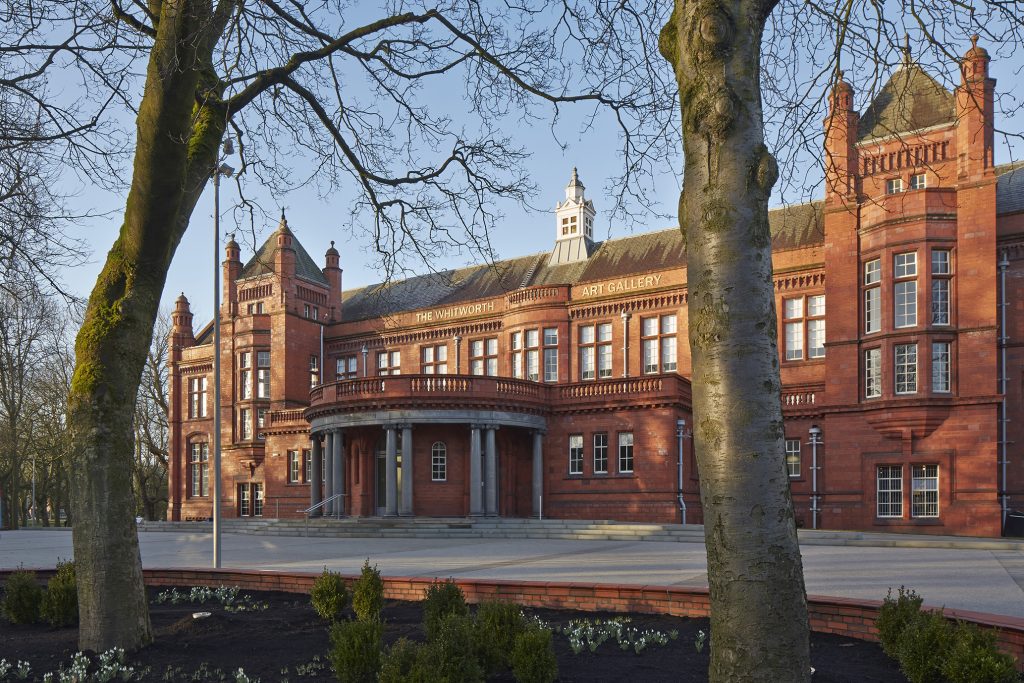
| 1887 | The Alfred Waterhouse designed Beyer Building opens at The University of Manchester, taking its name from celebrated German-born locomotive designer and co-founder of the Institution of Mechanical Engineers, Charles Beyer. |
| 1889 | Whitworth Art Gallery (pictured), originally known as the Whitworth Institute and Park opened as a gallery for people of all social classes. |
| 1890 | Manchester Museum opened to the public. |
| 1891 | The Palace Theatre, originally known as the Grand Old Lady of Oxford Street opened for the first time. |
| 1895 | The Alfred Waterhouse designed Refuge Assurance Company building opens. One of Manchester’s most famous buildings, it is now the Kimpton Clocktower Hotel. |
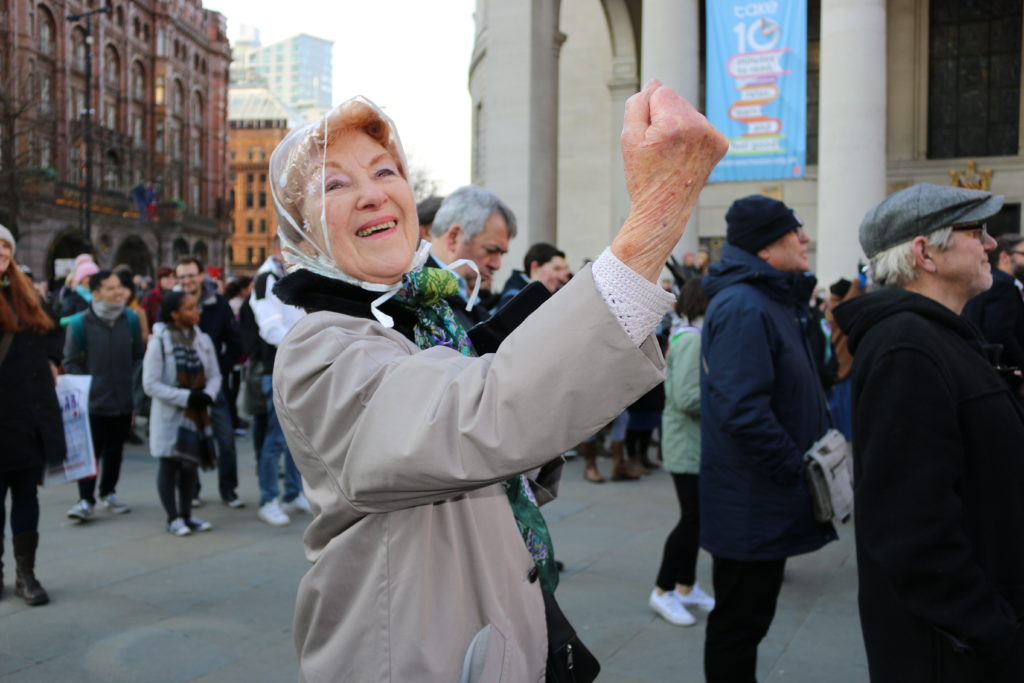
| 1903 | Emmeline Pankhurst founded the Women’s Social and Political Union (WSPU) and on Friday 14 December 2018, a new statue of the iconic Mancunian suffragette was unveiled in St Peter’s Square following a march down Oxford Road (pictured). |
| 1904 | A plan to move Manchester University NHS Foundation Trust to Oxford Road is agreed. The hospital later opens in 1908. |
| 1904 | Fredrick Henry Royce built the first ever Rolls Royce from a factory in Hulme. |
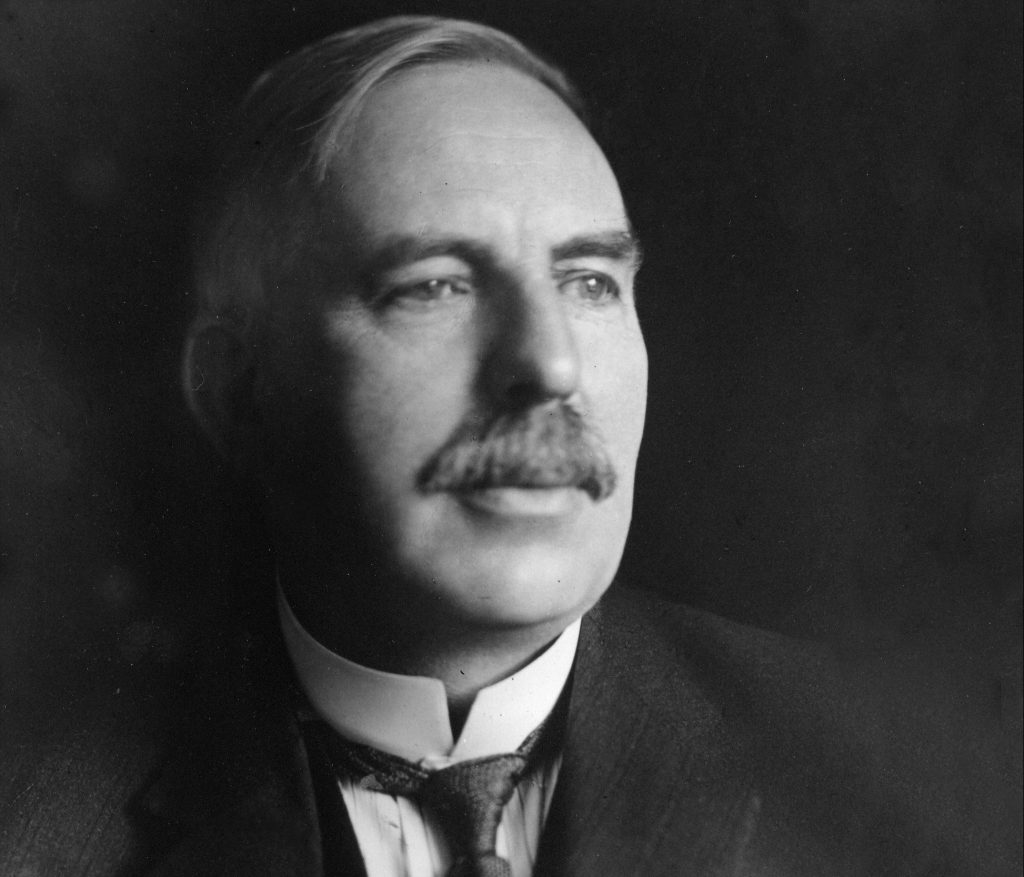
| 1906 | Joseph John Thomson was awarded the first Nobel Prize for Manchester in Physics. |
| 1908 | Ernest Rutherford was awarded Nobel Prize in Chemistry, and went on to split the atom in 1917 (pictured). |
| 1927 | The Ritz is built. |
| 1934 | Central Library opens. |
| 1935 | All Saints park opens as a children’s playground. |
| 1946 | Manchester Metropolitan University opens as The Manchester Library School. |

| 1948 | University of Manchester Professors, Tom Kilburn & Fred Williams developed the words first electronic stored-program computer; ‘The Manchester Baby’ (pictured). A working replica can be viewed at the Science and Industry Museum. |
| 1955 | Johnny Roadhouse Music opens on Oxford Road and establishes itself as an instrument shop to the stars with famous customers including Paul McCartney and Noel Gallagher. |
| 1972 | Pioneering vegetarian shop and cafe, The 8th Day moves to Oxford Road for the first time. |
| 1973 | The Northern School of Music merged with the Royal Manchester College of Music to form the Royal Northern College of Music and moved into a purpose-built home on Oxford Road. |
| 1973 | David Bowie performs at the Lesser Free Trade Hall. |
| 1975 | The BBC’s North West headquarters on Oxford Road opens for the first time before being demolished in 2012. This is now home to the Circle Square development. |
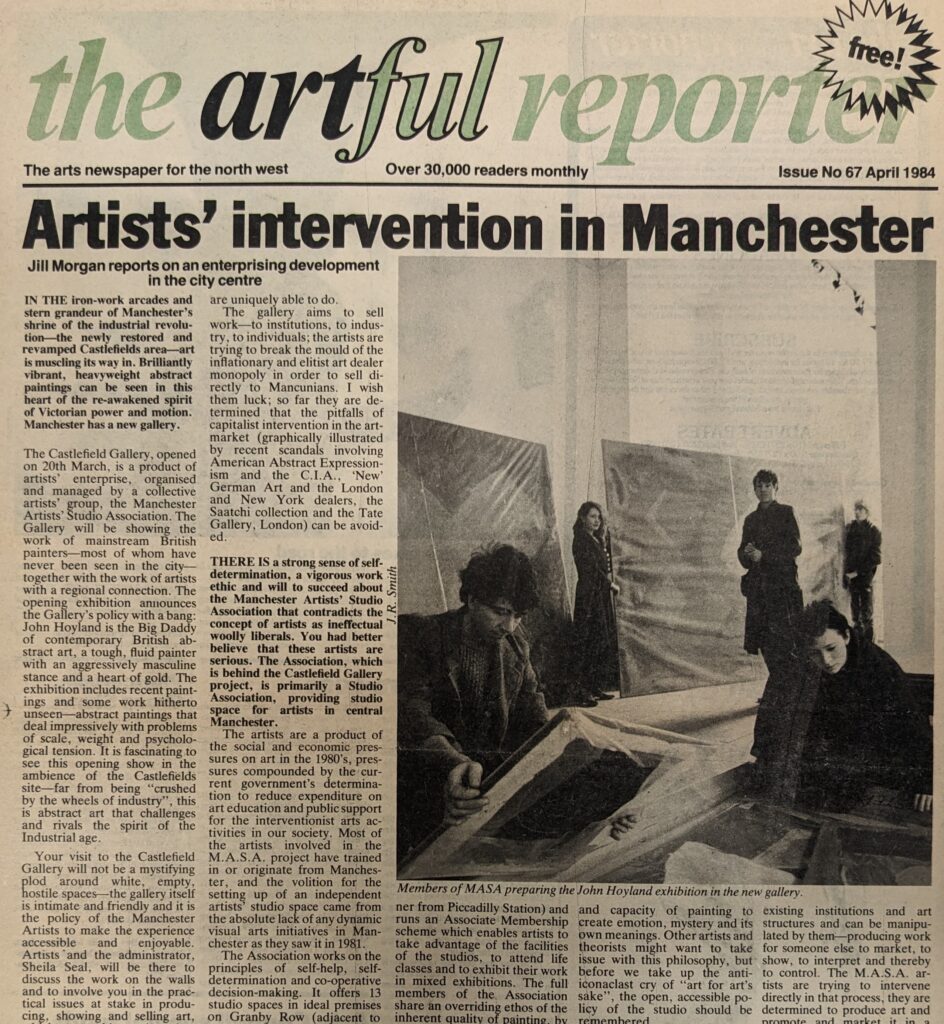
| 1976 | Sex Pistols play Lesser Free Trade Hall gig with Morrissey, Peter Hook, Bernard Sumner, The Buzzcocks, Anthony Wilson & Mark E Smith in attendance. |
| 1981 | Music television programme The Oxford Road Show is broadcast on BBC 2 on the 16th of January. The show welcomed bands from Queen to Bronski Beat before ending 1985. |
| 1982 | After renovation, the G-Mex Centre (now known as Manchester Central) is reopened as an exhibition centre and Manchester’s largest music venue. |
| 1983 | The Smiths (pictured) race back from performing This Charming Man on TOTP to play at the Hacienda. |
| 1984 | Castlefield Gallery opens as a contemporary exhibition space and artist-focused organisation. |
| 1984 | Manchester Science Park is established. |
| 1985 | Cornerhouse opened at 70 Oxford Street and gave Manchester a venue for contemporary independent cinema and challenging exhibitions. It would become HOME in 2015 as part of a merger with The Library Theatre. |
| 1988 | The Proud Trust, then known as the Gay Youth Group moved, into Sidney Street’s purpose-built Gay Centre. |
| 1992 | Manchester Metropolitan University gains university status under the government’s Further and Higher Education Act. |
| 1996 | Queen Elizabeth II and the Duke of Edinburgh open The Bridgewater Hall, one of the most significant concert halls in the UK and home to The Hallé Orchestra. |
| 1999 | The modern Contact theatre was reopened in 1999 as an arts venue for young people. |
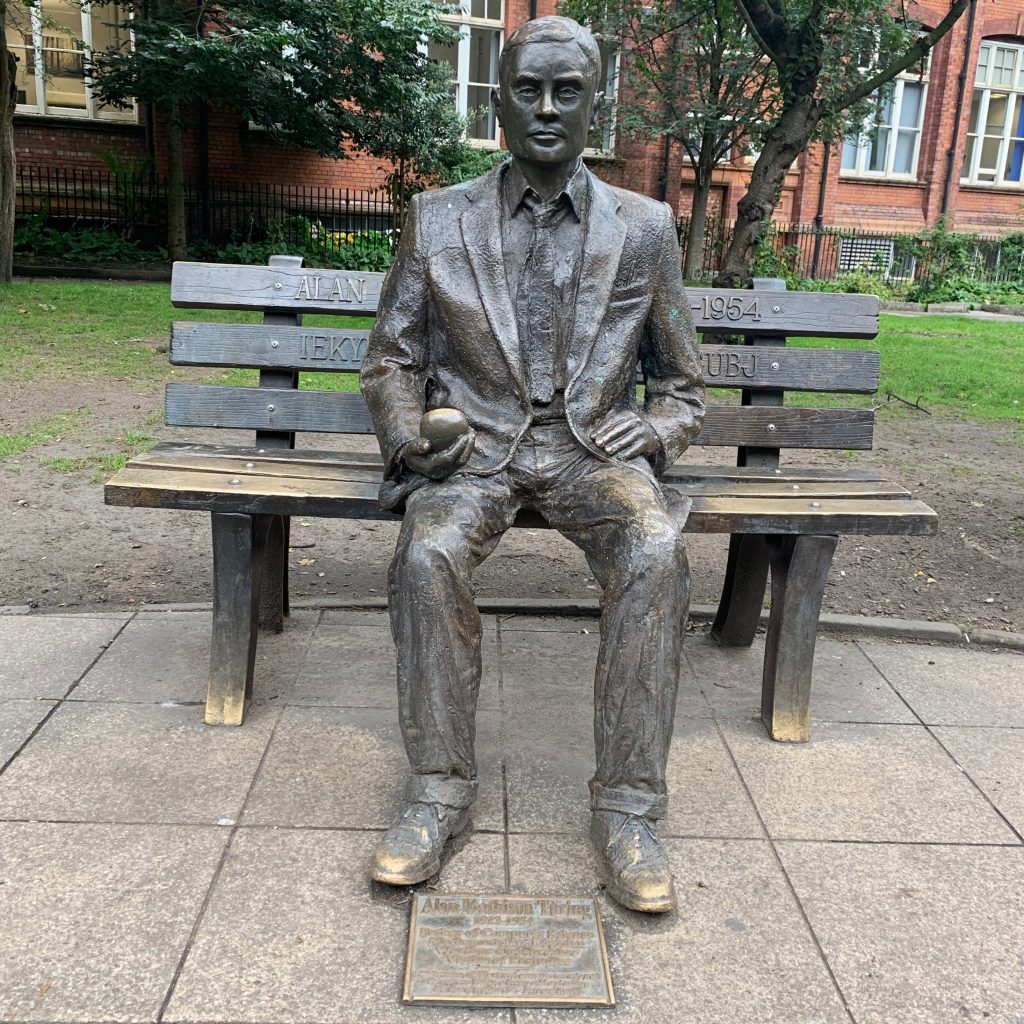
| 2000 | Queen Elizabeth II opens The Manchester Aquatics Centre which was purpose-built for the 2002 Commonwealth Games. |
| 2000 | Transitive, a University of Manchester spin-out company created software that was used in approximately 25 million mac computers between 2006 & 2009. |
| 2001 | The Alan Turing Memorial (pictured) is revealed in Sackville Gardens. The life size bronze figure was created by artist Glyn Hughes. |
| 2003 | Anthony Burgess’s window, Liana, establishes the International Anthony Burgess Foundation, the largest archive of the Manchester author’s work. |
| 2004 | The University of Manchester officially opens as a redbrick university after merging with UMIST & Victoria University of Manchester. |
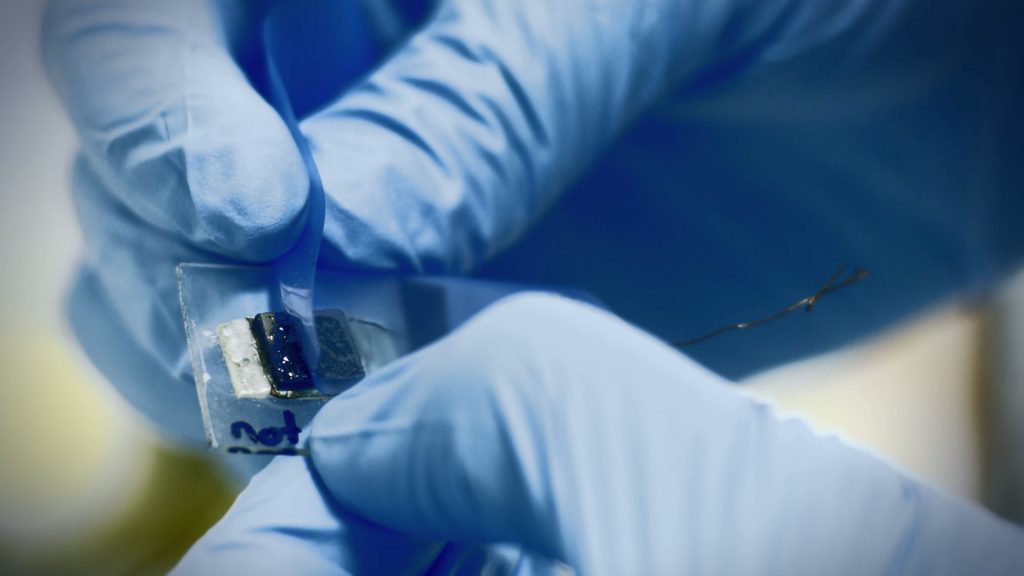
| 2004 | Professor Andre Geim & Kostya Novoselov isolate Graphene (pictured), the world’s first 2D material, leading to the Nobel Prize for Physics in 2010. |
| 2005 | The University of Manchester create the first 3D printer of human tissue |
| 2008 | After laying dormant for 30 years, an extensive restoration saw the former Manchester Adult Deaf and Dumb Institute reopen as the music venue The Deaf Institute. |
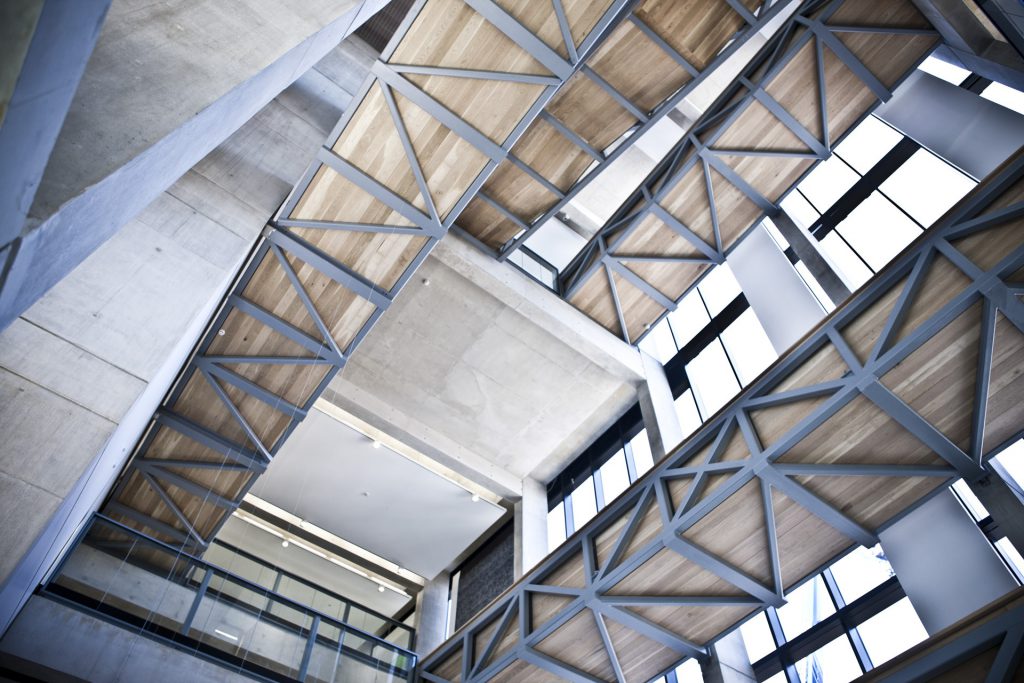
| 2013 | The £34M investment into Manchester Metropolitan University’s Art & Design faculty is completed, including the opening of the Benzie building (pictured). |
| 2014 | Prince plays a 2 ½ hour set at Manchester Academy for free. |
| 2014 | Citylabs 1.0 opens. |
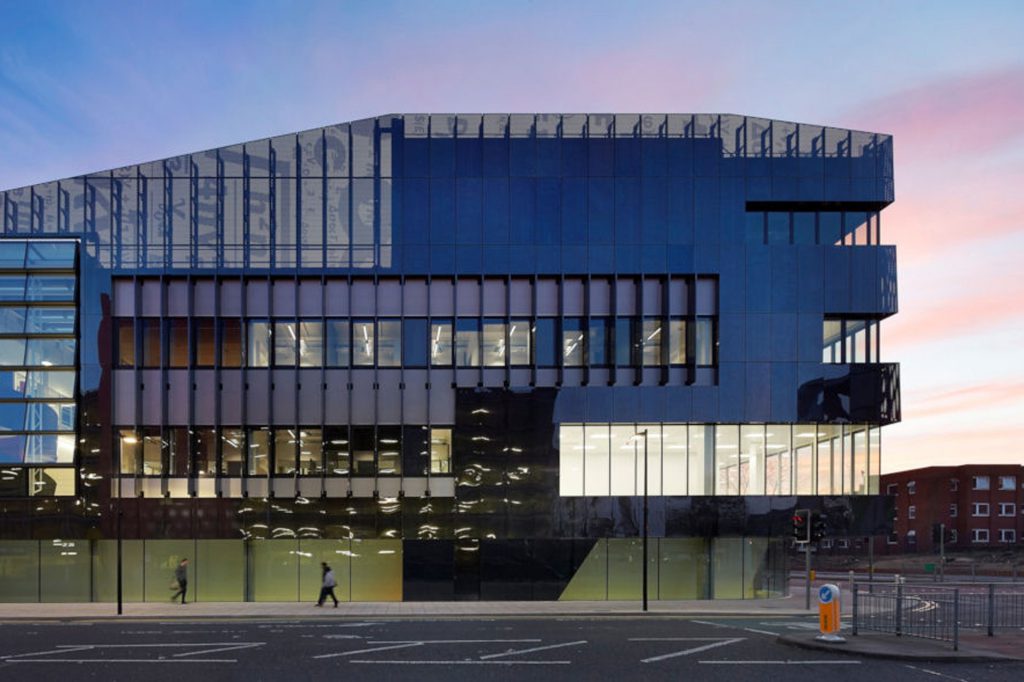
| 2015 | The Whitworth is awarded the UK’s 2015 Museum of Year. |
| 2015 | The Cornerhouse merges with the Library Theatre Company and opens its new £25M site on First Street, HOME. |
| 2015 | The National Graphene Institute opens (pictured). |
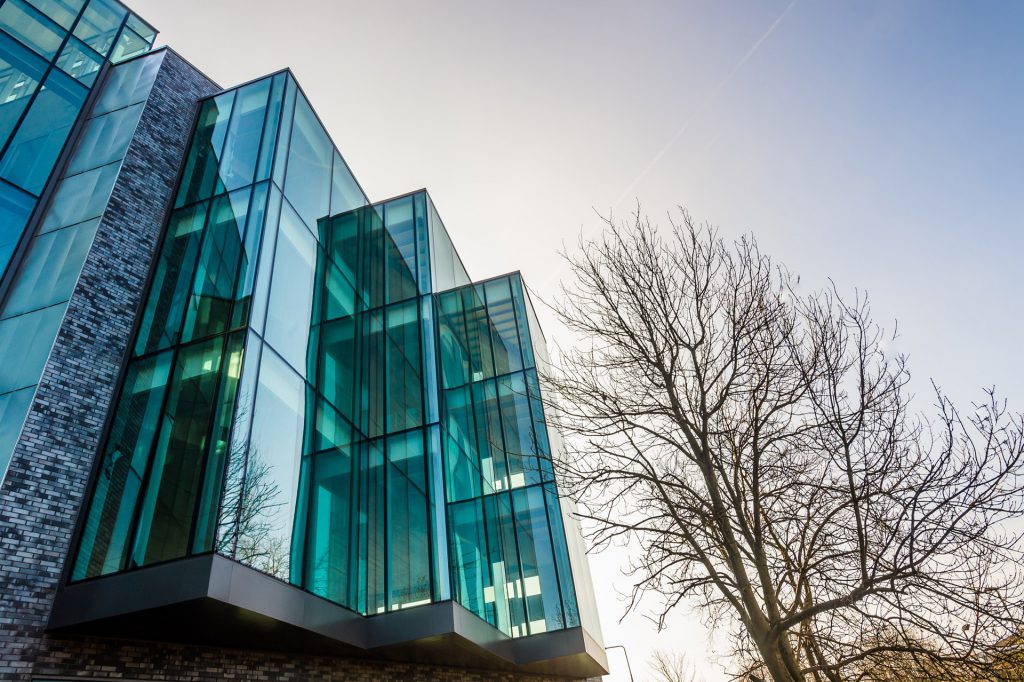
| 2016 | The Oxford Road Corridor Enterprise Zone was formerly designated. |
| 2016 | The first UK city to be awarded the European City of Science. |
| 2017 | Manchester University NHS Foundation Trust, the largest NHS trust in the United Kingdom is formed. |
| 2017 | Dutch-Style cycle lanes are introduced along Oxford Road. |
| 2017 | The Bright Building officially opens and wins a number of awards in its first year (pictured). |
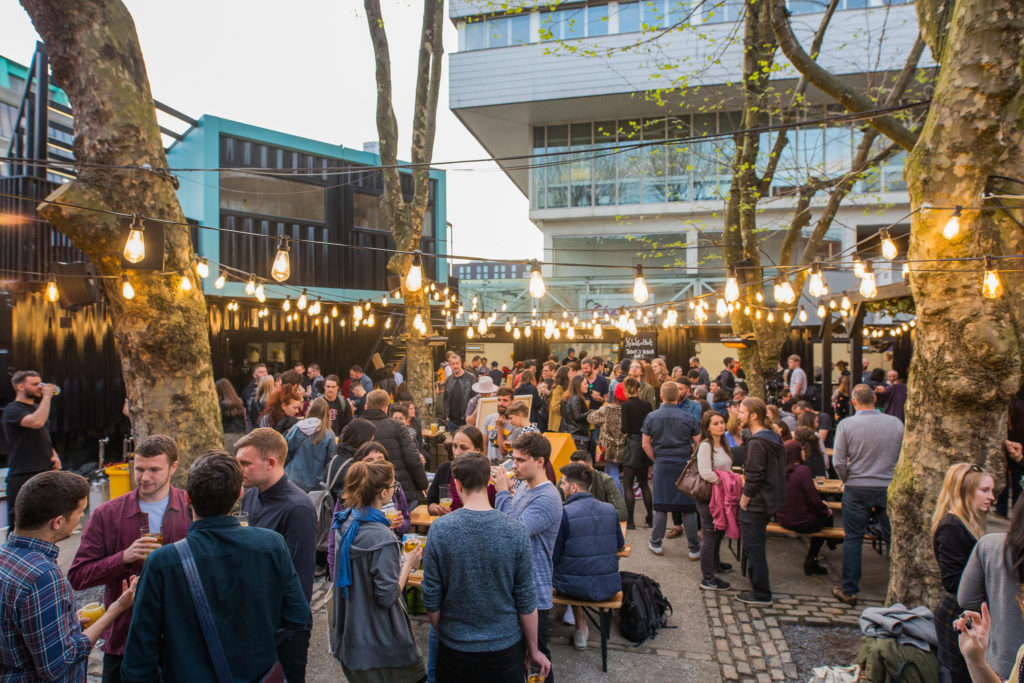
| 2018 | Thousands marched down Oxford Road for the unveiling of Hazel Reeves’ Our Emmeline statue, marking the 100-year anniversary of the Representation of the People Act, in which some women first won the right to vote in Britain. |
| 2018 | Hatch, the award winning food, drink and retail destination opens for the first time (pictured). The pop-up has since trebled in size and is now home to over 30 independent traders. |
| 2019 | The University of Manchester’s, Alliance Manchester Business School reopens. The school is ranked 2nd in the UK for research, providing education to undergraduates, postgraduates and executives from across the world. |
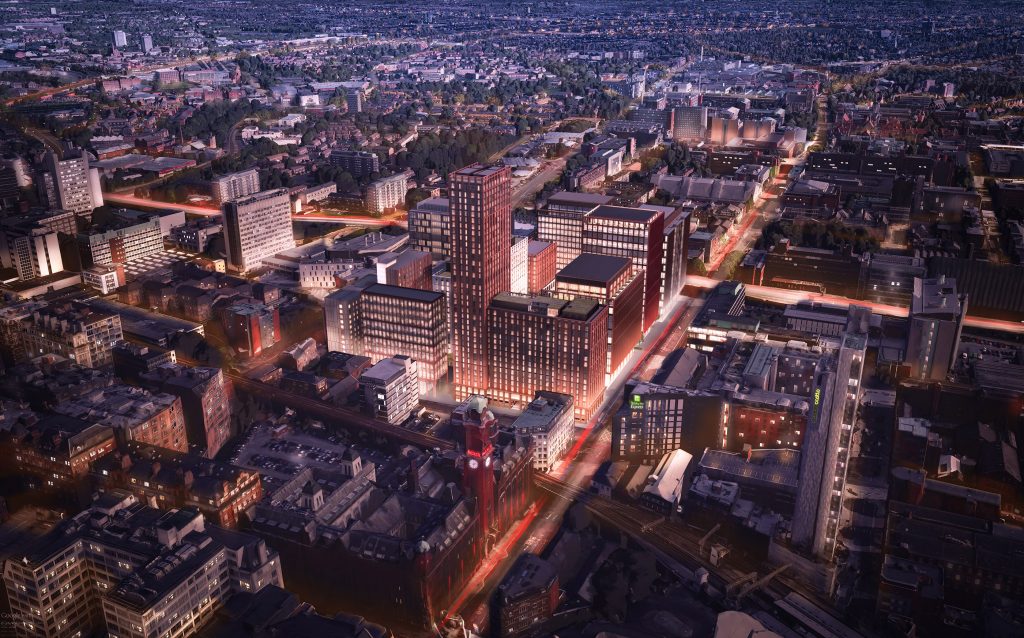
| 2021 | Circle Square, a new neighbourhood on the site of the former BBC building opens to the public |

| 2021 | Corridor of Light, a three-night celebration of the Oxford Road Corridor through language, light and ideas invited audiences to explore Manchester’s innovation district as its stories were revealed by encounters with visual art, installations and live entertainment. |
| 2021 | Manchester Metropolitan Uni opens two landmark buildings, SODA, their flagship School of Digital Arts and The Institute of Sport. |
| 2022 | Manchester Metropolitan Institute of Sport welcomes students to a new, world-class facility designed to champion everything that sport can do. |
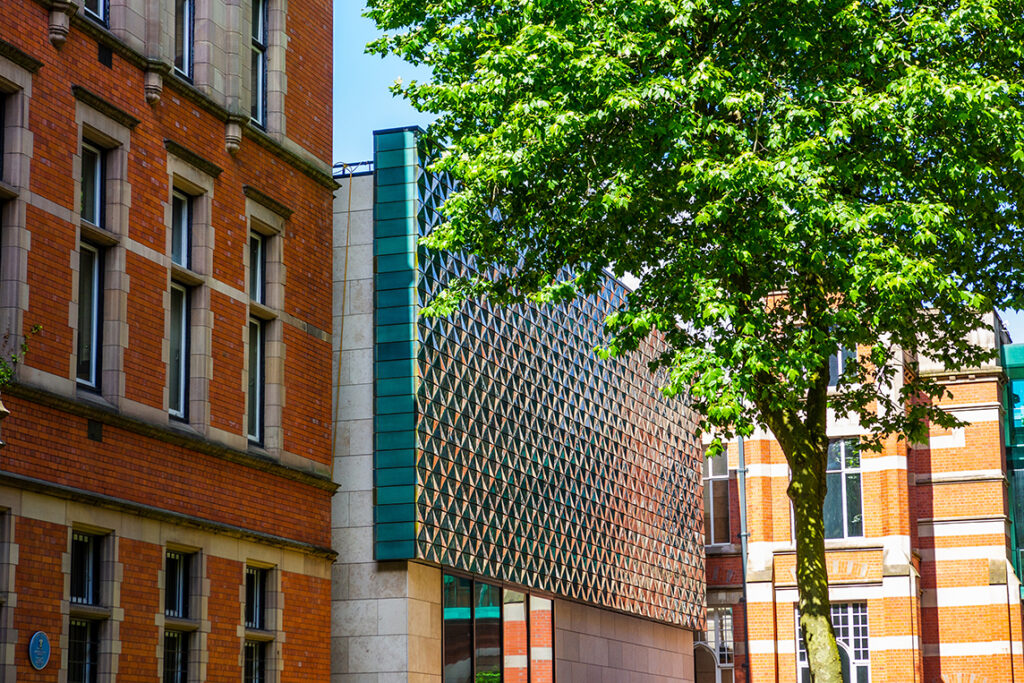
| 2023 | Following a £15m redevelopment, Manchester Museum reopens with news spaces including the co-curated South Asia Gallery in partnership with the British Museum |
| 2023 | After a two-year refurbishment, Manchester Aquatics Centre reopened and will host the Para Swimming World Championships in 2024. |
